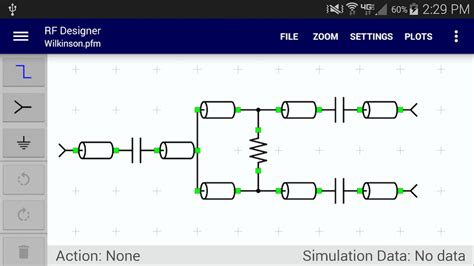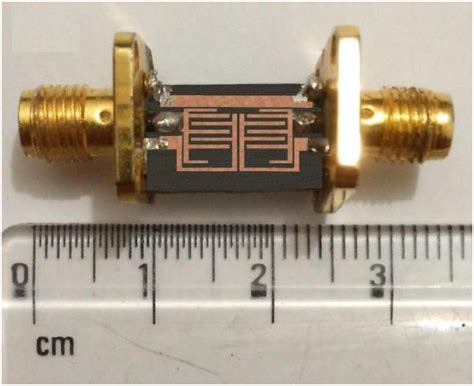What is RF Design Software?
RF design software is a category of computer-aided design (CAD) tools specifically tailored for the development of RF circuits and systems. These applications provide a comprehensive suite of features that enable engineers to create, simulate, and analyze RF designs at various stages of the development process. RF design software typically includes schematic capture, layout editing, electromagnetic (EM) simulation, and circuit simulation capabilities, all integrated into a user-friendly interface.
Key Features of RF Design Software
-
Schematic Capture: RF design software allows users to create detailed circuit schematics using a library of pre-defined components or custom-designed elements.
-
Layout Editing: Once the schematic is complete, RF design software enables users to create physical layouts of their circuits, including placement of components, routing of traces, and definition of layer stackups.
-
EM Simulation: Many RF design software packages include EM simulation tools that allow users to analyze the electromagnetic properties of their designs, such as signal integrity, crosstalk, and antenna performance.
-
Circuit Simulation: RF design software also includes circuit simulation tools that enable users to analyze the electrical behavior of their designs, including S-parameters, noise figure, and harmonic distortion.
-
Optimization Tools: Advanced RF design software often includes optimization tools that can automatically adjust design parameters to meet specified performance goals, such as minimizing insertion loss or maximizing bandwidth.
Benefits of Using RF Design Software
Using RF design software offers numerous benefits to engineers and companies involved in the development of RF systems:
-
Reduced Development Time: By automating many of the tedious and time-consuming tasks associated with RF design, such as manual calculations and iterative testing, RF design software can significantly reduce the overall development time.
-
Improved Accuracy: RF design software uses sophisticated algorithms and models to simulate and analyze RF circuits, providing highly accurate results that can be relied upon for critical design decisions.
-
Cost Savings: By reducing development time and minimizing the need for physical prototypes, RF design software can help companies save money on materials, labor, and testing expenses.
-
Enhanced Collaboration: Many RF design software packages include collaboration features that allow team members to work together on projects in real-time, regardless of their physical location.
-
Increased Innovation: With the ability to quickly iterate and test new ideas, RF design software enables engineers to explore more creative solutions and push the boundaries of RF technology.

Popular RF Design Software Packages
There are several well-established RF design software packages available on the market, each with its own strengths and target applications. Some of the most popular options include:
| Software | Developer | Key Features |
|---|---|---|
| ADS | Keysight Technologies | Comprehensive RF design and simulation, integrated with test and measurement equipment |
| AWR Design Environment | Cadence Design Systems | Powerful circuit simulation and EM analysis, with a focus on high-frequency applications |
| CST Studio Suite | Dassault Systèmes | 3D EM simulation and analysis for a wide range of applications, including antennas and filters |
| HFSS | ANSYS | Advanced 3D EM simulation for high-frequency and high-speed electronic devices |
| Microwave Office | Cadence Design Systems | Integrated schematic capture, layout, and simulation for RF and microwave circuits |

Choosing the Right RF Design Software
When selecting an RF design software package, there are several factors to consider:
-
Application Requirements: Different RF design software packages are optimized for specific applications, such as antenna design, filter development, or integrated circuit (IC) layout. Choose a software that aligns with your primary design needs.
-
Ease of Use: Consider the learning curve associated with each software package and whether it offers a user-friendly interface and intuitive workflow.
-
Integration with Other Tools: If you already use other CAD or simulation tools in your design process, look for an RF design software that can seamlessly integrate with your existing toolchain.
-
Scalability: As your RF design needs grow, you’ll want a software package that can scale with your requirements, offering advanced features and support for larger, more complex projects.
-
Customer Support and Training: Evaluate the level of customer support and training resources provided by the software vendor, as this can be crucial when encountering technical issues or learning new features.

RF Design Software in Action
To illustrate the power and versatility of RF design software, let’s consider a few real-world examples:
Smartphone Antenna Design
Modern smartphones rely on multiple antennas to support various wireless communication standards, such as 4G, 5G, Wi-Fi, and Bluetooth. RF design software allows engineers to create and simulate antenna designs that are optimized for the limited space available within a smartphone chassis, ensuring optimal performance and minimal interference.
Wireless Base Station Development
Wireless base stations, such as those used in cellular networks, require sophisticated RF systems to transmit and receive signals across large distances. RF design software enables engineers to design and simulate the complex circuitry and antenna arrays used in these systems, ensuring reliable communication and efficient use of the available frequency spectrum.
Radar Systems
Radar systems, used in applications such as aviation, maritime navigation, and weather monitoring, rely on precise RF design to detect and track objects at long ranges. RF design software allows engineers to create and analyze the complex antenna arrays and signal processing circuitry used in these systems, optimizing performance and minimizing false detections.
Frequently Asked Questions (FAQ)
-
Q: What is the difference between RF design software and general-purpose CAD software?
A: RF design software is specifically tailored for the unique challenges of designing RF circuits and systems, such as high-frequency effects, electromagnetic compatibility, and antenna performance. General-purpose CAD software, while useful for many electronic design tasks, may not have the specialized tools and models needed for accurate RF simulation and analysis. -
Q: Can RF design software be used for other types of electronic design?
A: While RF design software is optimized for RF applications, many packages also include tools for general electronic design tasks, such as schematic capture, PCB layout, and circuit simulation. However, for non-RF applications, a general-purpose CAD software may be more suitable and cost-effective. -
Q: How much does RF design software cost?
A: The cost of RF design software varies widely depending on the specific package, features, and licensing model. Some entry-level packages may cost a few thousand dollars, while high-end, enterprise-level solutions can cost tens or even hundreds of thousands of dollars. Many software vendors offer various licensing options, such as perpetual licenses, annual subscriptions, or pay-per-use models, to accommodate different budgets and usage requirements. -
Q: What kind of training is required to use RF design software effectively?
A: To use RF design software effectively, users should have a strong foundation in RF engineering principles, such as electromagnetic theory, transmission line theory, and antenna design. Many software vendors offer training courses and workshops to help users get up to speed with their specific tools and workflows. Additionally, most RF design software packages include extensive documentation, tutorials, and sample projects to help users learn and apply the various features and capabilities. -
Q: Can RF design software be used in conjunction with other simulation tools?
A: Yes, many RF design software packages can interface with other simulation tools, such as SPICE simulators, thermal analysis software, and mechanical CAD tools. This allows engineers to perform multi-physics simulations and analyze the interactions between different aspects of their designs, such as the thermal and mechanical effects on RF performance. Some RF design software packages even include built-in modules for these types of simulations, providing a more integrated and streamlined workflow.
Conclusion
RF design software is an essential tool for engineers and companies involved in the development of wireless communication systems and other RF-based technologies. By providing a comprehensive suite of tools for simulating, analyzing, and optimizing RF circuits and systems, these software packages can significantly reduce development time, improve accuracy, and lower costs. As RF technology continues to evolve and expand into new applications, the role of RF design software will only become more critical in enabling innovation and advancing the state of the art.
When choosing an RF design software package, it’s important to consider your specific application requirements, ease of use, integration with existing tools, scalability, and the level of customer support and training provided by the vendor. By selecting the right software and investing in the necessary training and resources, you can unlock the full potential of RF design software and stay at the forefront of this exciting and dynamic field.

No responses yet